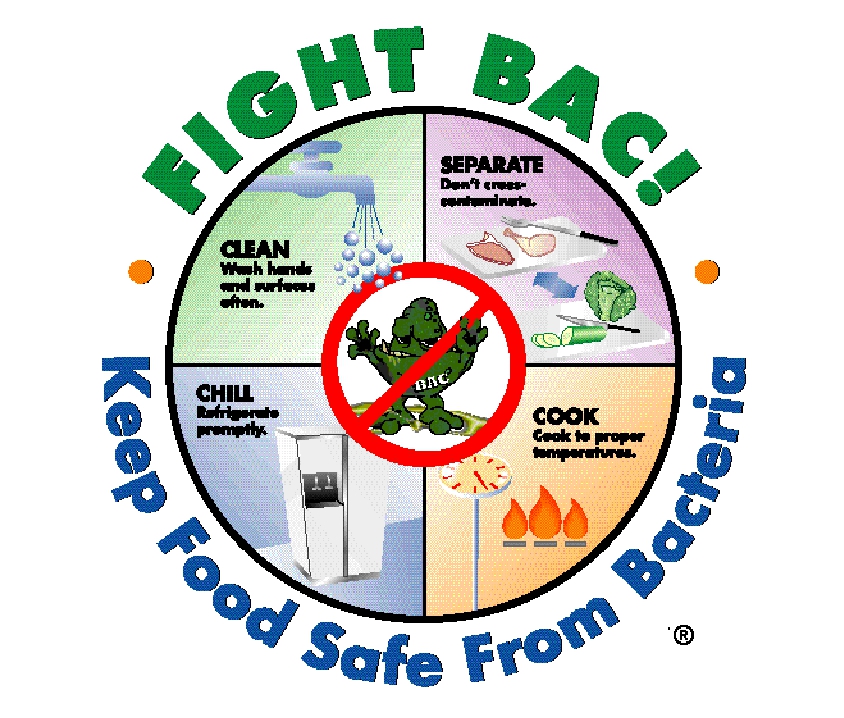Tips for a Food-Poisoning-Free Thanksgiving
 Thanksgiving is upon us and what a day it will be: Reuniting with family and friends, getting outside for that annual flag football game with your favorite cousins, and of course, all that delicious food.
Thanksgiving is upon us and what a day it will be: Reuniting with family and friends, getting outside for that annual flag football game with your favorite cousins, and of course, all that delicious food.
But wait. Did you know that you can't really taste or see (without a microscope) Campylobacter and Salmonella bacteria? Although your turkey and stuffing might look and smell fine to your naked senses, they could very well give you a case of the runs or a day of vomiting that you'll never forget.
So, without further ado, I will tell you how to prepare food for this Thanksgiving meal so that you and your loved ones won't spend Black Friday in the bathroom. Ahem. Go out and buy a meat thermometer, and let's proceed.
1. Wash your hands and kitchen tools, because birdies are dirty.
Did you know that most public surfaces are contaminated with E. coli bacteria? Even if you are diligent in washing your hands with soap every single time you use the bathroom, not everyone else is, so you still probably have some fecal bacteria on your hands. And since your turkey, as well as any eggs in your stuffing, are probably contaminated with either Campylobacter or Salmonella bacteria, really...not washing your hands before handling food is just adding insult to injury.
Wash your hands (with soap and hot water, natch) after handling uncooked or undercooked turkey or eggs. Please don't handle raw salad with hands that just touched undercooked meat. I've seen great cooks do it, and I'm begging you not to. This also goes for utensils and cutting boards – wash them with hot, soapy water so that raw ingredients (including vegetables) don't contaminate cooked foods.
Beware of dish towels. Drying dishes, surfaces and (Heaven forfend) salad vegetables with a towel that you wiped your raw-meaty hands on is an awesome way to get everybody sick.
A press agent for the USDA told me, "Most poultry is contaminated." Straight up, that's what he said. Lovelies, the odds are against you, so wash up.
2. All things being equal, keep 'em separated.
The name of the Thanksgiving cooking game is separating contaminated food from clean food. This is why The Partnership for Food Safety Education recommends roasting your stuffing outside the turkey (in a casserole dish) for "optimum safety and more even cooking."
This is why: Since we've established that your turkey is probably contaminated, you must understand that it can pass bacteria on to the stuffing. Even if your turkey reaches 165 degrees F (the temperature that kills bacteria), the innermost bits of stuffing take a lot longer to reach that temperature. If you must, must cook the stuffing inside the bird, stuff the turkey immediately before cooking (so the bacteria have less time to multiply) and test the temperature at its deepest point with a food thermometer.
3. Thaw like a champ.
There are 3 safe ways to thaw a turkey: in the refrigerator, in the microwave or in cold water. However you do it, just be sure your turkey has been thawed thoroughly before you cook it. Why? Frozen turkey takes a lot longer to reach an internal temperature of 165 degrees F (duh, but so many people don't take it into consideration and find themselves with bits of bacteria-infested raw meat on their plates). You could cook a frozen turkey from its frozen state, but it will take 50% longer.
4. Cook it right -- and use a meat thermometer.
Contrary to its appearance when stripped of its feathers and cute little wattle, a turkey is not a chicken. A mid-size 12-14 pound bird must be roasted for 3 to 4 hours, while an average sized "roaster" chicken needs to be cooked for an hour to an hour and fifteen minutes, according to the USDA. Even if your turkey comes with a plastic pop-up thermometer, test it after its designated cooking time at the "innermost part of the wing and thigh" (FightBac.org) with a metal meat thermometer. And never cook a turkey at a temperature lower than 325 degrees F.
5. Finally, keep your food out of the danger zone.
Bacteria grow really fast in food at temperatures between 40 and 140 degrees F. Your mission is to prevent your food hanging around in that temperature range for more than 2 hours. Keep the meal on the table for a couple hours, but refrigerate your leftovers promptly when you hit the 2 hour mark. And please, please don't leave food sitting out in the Danger Zone while you are cooking. It's just mean.
Have I made you paranoid yet? Good. You should be. A healthy dose of paranoia about bacteria when you're cooking shows that you care about your guests.
Chaya Goodman Kurtz is a Networx writer.
Updated October 14, 2018.
Looking for a Pro? Call us (866) 441-6648

Cleaning Average Costs
Cleaning Services Experiences

Heat Pump Replacement By A Contractor I Can Trust

Garage Door Opener Replacement In Brutal Winter Weather



